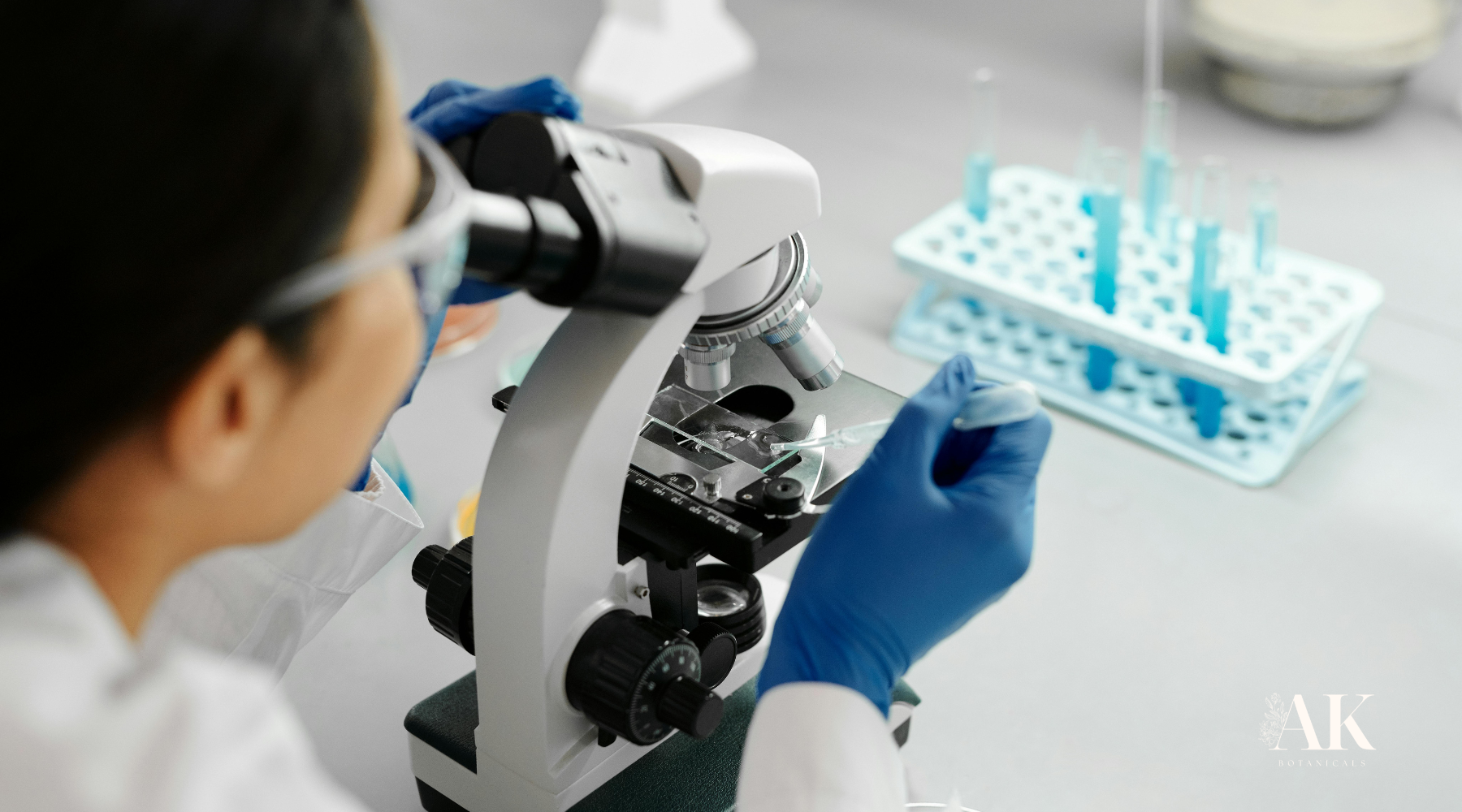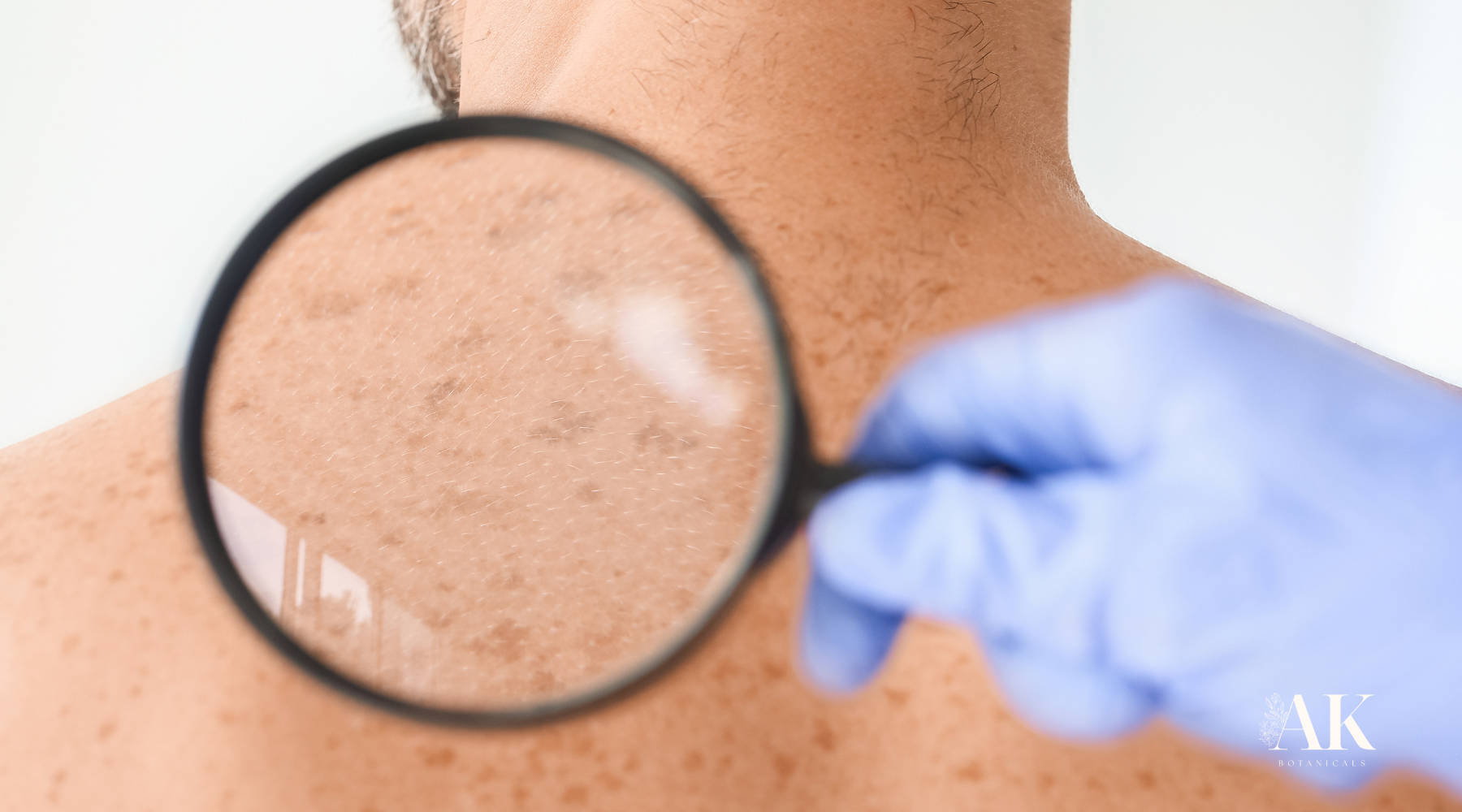
Can Actinic Keratosis Be Genetic? Exploring the Genetic Links
DNA, Gene Expression, Skin Health, and Actinic Keratosis
Many people often ask how much of our health is in our control and how much is hereditary. Some conditions come from lifestyle. Others seem to run in families. And when it comes to actinic keratosis (AK), the question becomes even more pressing.
AK appears as rough, scaly spots on skin that has seen too much sun. Doctors know it is linked to cumulative ultraviolet (UV) exposure. But not everyone exposed to the same amount of sun develops the same number of lesions. Some people develop dozens of spots after moderate exposure, others spend years outdoors and show fewer. Genes and gene expression may help explain the difference.
Interest in genetics has grown quickly, and many people now test for ancestry, metabolism, and even cancer risk. Dermatology is part of this change and scientists study how inherited traits and expressed genes shape the skin’s response to UV radiation. They also explore how environment and genetics combine to create conditions like AK.
In this article we take a close look at what actinic keratosis is, how it differs from other skin lesions, what role DNA may play, and why environment still drives much of the outcome. It also looks at new studies that explore keratosis pathology, genetic variations, and microarray analysis of lesions. Our goal is to share a clear picture without exaggerating what genes can and cannot do.
What Is Actinic Keratosis?
Actinic keratosis is one of the most common sun-related conditions. The spots are usually small, rough, and flaky. They form on areas that get frequent sun: face, scalp, ears, arms, and hands. They may sting, itch, or feel like sandpaper. Some appear pink or red. Others are brown or close to skin tone.
Doctors classify AK as a precancerous skin lesion. That means it has the potential to turn into cancer, most often squamous cell carcinoma (SCC). Research shows that around 10 percent of untreated lesions may progress, most do not. Still, dermatologists monitor AK carefully because it signals cumulative sun damage.
How AK Differs from Similar Conditions
AK can resemble other skin growths, making diagnosis important.
-
Seborrheic keratosis: These are benign growths. They often look waxy or wart-like and may seem “pasted on.” They are not caused by the sun and are not precancerous.
-
Basal cell carcinoma (BCC): This is the most common skin cancer. It can appear as a pearly bump, a scar-like patch, or a sore that does not heal. While it is linked to the sun, it behaves differently than AK.
A dermatologist in a clinic setting can distinguish between them with exams or biopsies. Correct diagnosis prevents confusion and ensures proper care.
How Common Is AK?
Actinic keratoses affect millions of people. In the United States, more than 40 million people live with them. In Australia, more than half of adults over 40 show signs. Europe also reports high rates, especially in southern countries with strong sunlight.
Fair-skinned people face the highest risk. But actinic keratoses can appear in darker skin tones after years of sun exposure. This makes AK one of the most studied conditions in keratosis pathology.
Genetics and Susceptibility — Is It Hereditary?
So, how much of AK comes from DNA? Scientists agree UV exposure is the main cause. But genes decide how the skin reacts to that exposure.
Pigmentation and the MC1R Gene
One of the most studied genes in dermatology is MC1R. It influences pigmentation. Variants of MC1R are common in people with red hair, freckles, and light skin. These variants reduce the production of eumelanin, the pigment that shields against UV. Instead, they produce more pheomelanin, which offers weaker defense.
This explains why fair-skinned people burn easily and often develop more keratoses actinic. Pigmentation genes do not guarantee lesions, but they raise sensitivity.
DNA Repair Genes
UV radiation damages DNA inside skin cells. The body relies on repair systems to correct this damage, and genes regulate how well those systems function. When repair genes operate efficiently, most errors are fixed. When efficiency drops, mutations begin to build up.
Research shows that variations in repair genes can reduce the skin’s ability to recover from UV damage (Human Molecular Genetics). Over time, these small differences accumulate, leading to more actinic keratoses, greater visible damage, and a higher chance of abnormal cell growth.
Immune System Genes
The immune system plays a central role in removing abnormal cells before they spread. Genes that regulate immune defense influence this process in actinic keratosis. Some immune systems detect and eliminate damaged cells quickly, while others respond more slowly.
This difference becomes clear in immunosuppressed groups. Organ transplant recipients develop actinic keratoses at much higher rates (Kaiser Permanente Division of Research ). This underscores how DNA and immunity interact to affect skin health.
Family History
Doctors ask about family history for a reason. Studies show that AK and other non-melanoma skin cancers often run in families. Shared DNA, combined with shared sun habits, can explain the clustering.
No single gene causes AK. But a mix of pigmentation, repair, and immune genes creates a profile of susceptibility. Family history points to when that profile may be present.
Molecular Research and Gene Expression
Modern studies go deeper than family history, they look at gene expression directly. Researchers use microarray analysis to compare which genes are active in AK lesions versus normal skin (Journal of Investigative Dermatology).
Some genes are differentially expressed, especially those linked to DNA repair, inflammation, and cell signaling.
Other studies examine DNA methylation, a chemical process that can turn genes on or off. Abnormal methylation has been seen in AK, suggesting another layer of genetic control (Nature).
These findings show that AK is not just about DNA sequence. It is also about how genes are expressed and regulated over time.
Environment vs. Inheritance
Genes set the baseline. The environment decides the outcome. That balance explains why AK is so widespread.
Sun Exposure
The strongest factor remains cumulative UV radiation. Each burn and every year in the sun raises the risk. Even resilient genetics cannot offset decades outdoors. And people with sensitive genetics may develop lesions early in life.
Geography and Climate
Location matters. States like Florida, Arizona, and Texas report high numbers. Countries like Australia and Brazil do too. The UV index is higher in these areas all year. People in northern climates tend to show fewer lesions unless they spend long periods outdoors.
Occupation
Outdoor jobs drive higher risk. Farmers, sailors, construction workers, and lifeguards develop more lesions. In these cases, genes may amplify the effect, but the environment leads.
Twin Studies
Twin studies give some of the clearest answers. Identical twins share nearly all their DNA. But their skin tells different stories if their lives differ. One twin who worked outside may show dozens of actinic keratoses. The other, who worked indoors, may show very few.
These controlled comparisons confirm a simple truth: genes load the dice, but the environment throws them.
Ethnic and National Differences
Ethnic background changes the picture. Scandinavian populations, with very light skin, show high susceptibility. Their risk increases further in sunny regions. Mediterranean populations, with darker pigmentation, show lower rates despite strong sun exposure. The combination of DNA and environment shapes the outcomes.
A Historical Perspective on AK and Genetics
AK was first described in the early 19th century. At that time, doctors noticed that fair-skinned farmers and sailors were more affected. They lacked modern tools but observed patterns that hinted at both heredity and environment.
In the 20th century, studies linked sun exposure directly to skin lesions. As molecular biology grew, attention shifted to DNA damage and repair. By the early 2000s, microarray analysis and sequencing revealed more about gene expression in AK lesions. Today, researchers add epigenetic factors such as DNA methylation to the puzzle.
The story of AK research reflects the growth of dermatology as a field. From simple observation to molecular detail, each stage has added knowledge about how genes and the sun interact.
Clinical Practice and Genetic Awareness
In today’s clinic setting, dermatologists focus first on identifying and treating visible lesions. Treatments may include freezing, topical creams, or minor procedures. But awareness of genetic susceptibility is growing.
Doctors often note family history in patient charts. Some also discuss genetic risk factors when counseling patients on sun protection. While routine genetic testing for AK is not standard, researchers expect that one day it could help identify higher-risk groups.
For now, clinical practice emphasizes surveillance and removal. Patients with multiple actinic keratoses are often monitored closely because the presence of many lesions signals heavy UV damage and a higher overall cancer risk.
The Future of Research: Genetics and Dermatology
Research into AK continues to expand. And genetics is a big part of that expansion.
-
Genetic Testing: Consumer tests already claim to assess skin cancer risk. Dermatologists expect more reliable tools in the future.
-
Personalized Dermatology: Skincare may adapt to genetic profiles. People with weak DNA repair could benefit from targeted support.
-
Ongoing Studies: Large-scale projects are examining thousands of samples to map differentially expressed genes and identify consistent patterns.
The field is still young. But the trend is clear: understanding DNA and gene expression will continue to shape how AK is studied and manage
Research into AK continues to expand. And genetics is a big part of that expansion.
-
Genetic Testing: Consumer tests already claim to assess skin cancer risk. Dermatologists expect more reliable tools in the future.
-
Personalized Dermatology: Skincare may adapt to genetic profiles. People with weak DNA repair could benefit from targeted support.
-
Ongoing Studies: Large-scale projects are examining thousands of samples to map differentially expressed genes and identify consistent patterns.
The field is still young. But the trend is clear: understanding DNA and gene expression will continue to shape how AK is studied and managed.
So, can actinic keratosis be genetic? The answer is balanced.
Genes influence pigmentation, DNA repair, and immune defense. They explain why some people develop lesions faster than others. Family history, genetic variants, and abnormal gene expression matter.
But the environment remains the dominant factor. Sunlight, geography, and occupation push AK forward. Two people with the same DNA can end up with very different skin depending on exposure.
Actinic keratosis is best understood as the product of genetics and environment. Genes set the baseline risk. Sunlight pulls the trigger. Recognizing both sides helps doctors and patients see the condition clearly and act with awareness.




